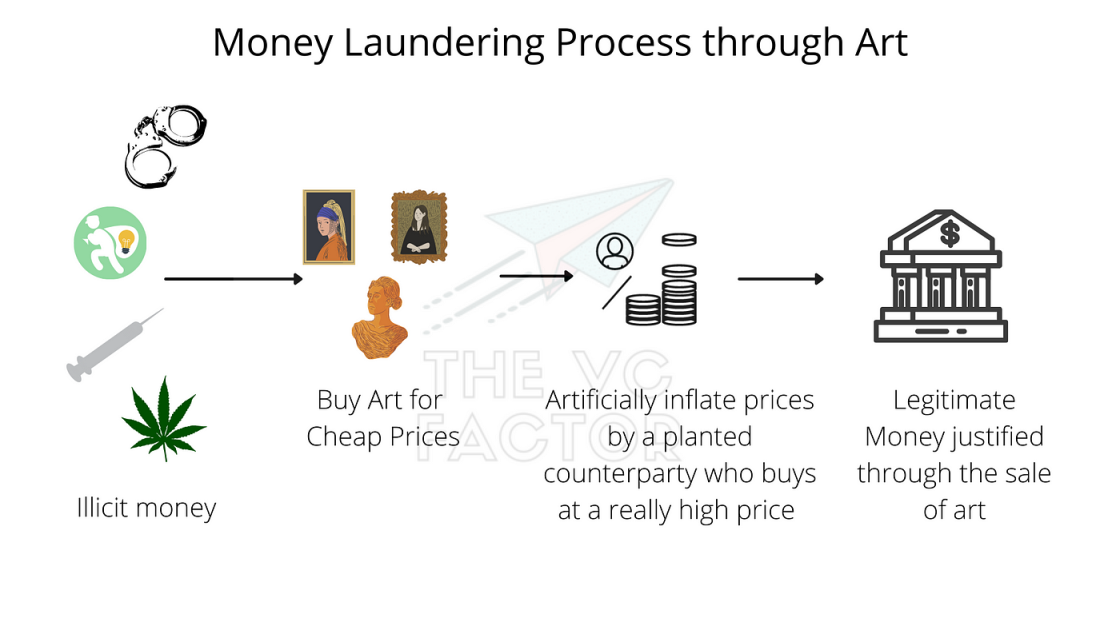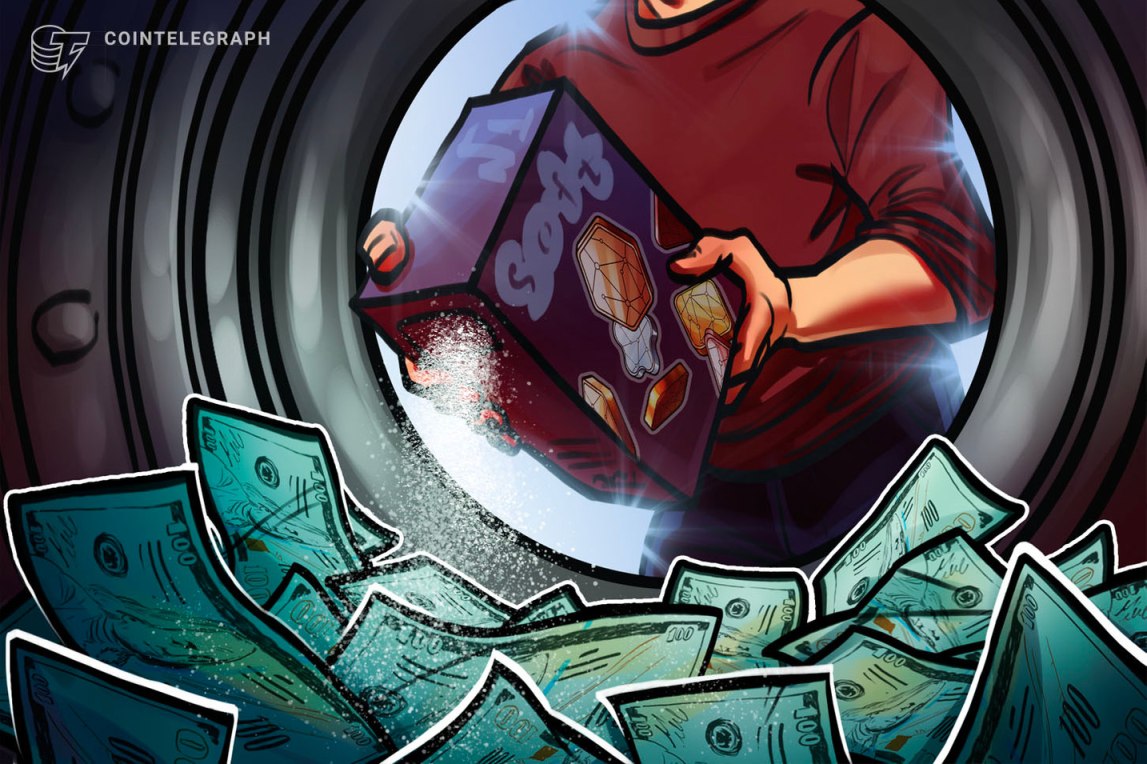NFT And Money Laundering
Introduction
Hello NFT Enthusiasts,
Welcome to our exploration of the relationship between NFTs and money laundering. In recent years, NFTs have gained immense popularity as a form of digital asset ownership. However, with the rise of this new technology, concerns have also been raised about the potential misuse of NFTs for illicit financial activities such as money laundering. In this article, we will delve into the topic of NFTs and money laundering, exploring what it entails, who is involved, when and where it takes place, why it is a concern, and how it can happen.

Image Source: cnbcfm.com
So, let’s dive into the world of NFTs and money laundering and understand the implications of this emerging issue.
What is NFT And Money Laundering?
Definition: NFT And Money Laundering refers to the illegal process of disguising the origins of funds obtained through criminal activities by using Non-Fungible Tokens (NFTs). It involves transforming illicitly acquired assets into digital assets, making it difficult to trace the proceeds of crime.
Key Points:

Image Source: medium.com
🔍 Money laundering is a global issue that affects various industries, and the art world has historically been susceptible to such activities.
🎨 With the introduction of NFTs, the digital art market has boomed, giving rise to new possibilities for money laundering.
💰 Criminals can exploit the anonymous and decentralized nature of NFT transactions to launder money without leaving a traditional paper trail.
🌐 The borderless nature of NFTs makes it challenging for regulatory authorities to monitor and regulate transactions effectively.
💼 Money laundering through NFTs can involve complex schemes, including using shell companies, multiple transactions, and layering techniques to obscure the origins of funds.
🔒 While NFT platforms implement various security measures, loopholes and vulnerabilities can still be exploited by money launderers.
⚖️ The legal and regulatory frameworks surrounding NFTs and money laundering are still evolving, requiring constant adaptation to combat these illicit activities.
Who is Involved in NFT And Money Laundering?
Individuals and Entities:

Image Source: cointelegraph.com
NFT and money laundering involve various actors, including:
👥 Criminals: Those engaged in illegal activities seek to exploit NFTs as a means to legitimize their ill-gotten gains.
🧩 Money Launderers: Specialized individuals or organizations skilled in disguising the origin of funds through complex transactions.
🖼️ Artists and Creators: In some instances, artists and creators may unknowingly become part of money laundering schemes when their works are used as a front.
💻 NFT Platforms: While most platforms have security measures in place, some may unknowingly facilitate money laundering due to vulnerabilities in their systems.
🏦 Financial Institutions: Banks and other financial entities may inadvertently participate in money laundering if they fail to implement robust due diligence processes and transaction monitoring systems.
🌐 Regulatory Authorities: Government bodies responsible for overseeing financial transactions play a crucial role in combating money laundering through enforcing regulations and conducting investigations.
When and Where Does NFT And Money Laundering Occur?
Timing and Locations:
NFT and money laundering can occur at various stages and locations throughout the process:
🌍 Creation: Money laundering can start at the creation stage when criminals generate NFTs using illicitly acquired funds.
🖥️ Online Platforms: NFT marketplaces provide opportunities for money laundering due to their global reach and ease of transferring digital assets.
💼 Auctions and Sales: Money laundering can take place during the auction or sale of NFTs, where criminal funds can be mixed with legitimate transactions.
🌐 Cross-Border Transactions: The decentralized nature of NFTs makes it challenging for authorities to monitor and regulate cross-border transactions effectively.
🏝️ Offshore Accounts: Money launderers often utilize offshore accounts to hide the true ownership and movement of funds.
🔒 Wallets and Exchanges: Criminals may exploit vulnerabilities in NFT wallets and exchanges to facilitate the laundering of funds.
🚧 Emerging Markets: As the popularity of NFTs grows, emerging markets with less stringent regulations may become hotspots for money laundering activities.
Why is NFT And Money Laundering a Concern?
Key Concerns:
There are several reasons why NFT and money laundering are significant concerns:
💰 Proliferation of Illicit Funds: Money laundering through NFTs allows criminals to inject illegal funds into the legitimate economy without detection.
🚫 Undermining Trust: The involvement of NFTs in money laundering erodes trust in the digital asset ecosystem, potentially deterring potential investors and users.
🌐 Global Impact: Money laundering transcends borders, making it a challenge for authorities to combat the issue on a global scale.
🔓 Regulatory Gaps: The rapid evolution of NFT technology has outpaced the development of comprehensive regulatory frameworks, leaving gaps for exploitation.
⚖️ Legal Ramifications: The involvement of artists, creators, and platforms in money laundering schemes can have severe legal consequences, tarnishing reputations and resulting in legal action.
How Does NFT And Money Laundering Happen?
Process and Techniques:
NFT and money laundering involve various processes and techniques:
💸 Layering: Money launderers use complex transactions and multiple transfers to obscure the origin of funds.
🔀 Mixing Services: Anonymous mixing services are employed to make it difficult to trace the flow of funds.
🌐 Decentralized Exchanges: Criminals exploit decentralized exchanges to convert illicit funds into cryptocurrencies and subsequently into NFTs.
📈 Price Manipulation: Money launderers may artificially inflate or deflate the prices of NFTs to legitimize the movement of funds.
🖼️ Fake Creations: Criminals create counterfeit NFTs to launder money, mimicking legitimate artworks or digital assets.
✉️ Phishing and Scams: Fraudulent schemes targeting artists, collectors, and investors can be used to facilitate money laundering through NFTs.
💼 Shell Companies: Money launderers establish shell companies or use existing ones to launder funds through NFT transactions.
Advantages and Disadvantages of NFT And Money Laundering
Advantages:
🤑 Potential for Anonymity: Money laundering through NFTs allows criminals to hide their identities and evade authorities.
🌐 Global Scope: The decentralized nature of NFTs enables money laundering on a global scale, making it difficult to track and combat.
💲 Lucrative Revenue Stream: Money laundering can generate significant profits for criminals, enticing them to exploit NFTs.
Disadvantages:
⛔ Legal Consequences: Participation in money laundering schemes, knowingly or unknowingly, can result in severe legal penalties.
🛡️ Risk to Reputation: Artists, creators, and platforms associated with money laundering schemes can face reputational damage.
📉 Erosion of Trust: The involvement of NFTs in money laundering undermines trust in the digital asset ecosystem, impacting its growth and adoption.
FAQs (Frequently Asked Questions)
1. Can NFT transactions be traced?
Yes, NFT transactions can be traced to a certain extent. While the transaction itself may not reveal personal information, forensic analysis can potentially link NFT transactions to individuals.
2. Are NFT platforms doing enough to prevent money laundering?
NFT platforms are implementing various security measures to prevent money laundering. However, the evolving nature of this issue requires continuous improvements and collaboration with regulatory authorities.
3. How can artists protect themselves from unknowingly participating in money laundering schemes?
Artists can protect themselves by conducting due diligence on potential buyers, verifying the sources of funds, and being cautious of suspicious transactions that may raise red flags.
4. What measures can regulatory authorities take to combat NFT and money laundering?
Regulatory authorities can establish comprehensive frameworks, enforce stringent KYC (Know Your Customer) procedures, and enhance cooperation with international counterparts to combat NFT and money laundering effectively.
5. Is investing in NFTs safe given the risks associated with money laundering?
Investing in NFTs can be safe if individuals exercise caution, conduct thorough research, and choose reputable platforms. It is essential to be aware of the potential risks and stay informed about regulatory developments.
Conclusion
In conclusion, the intersection of NFTs and money laundering raises significant concerns in the digital asset ecosystem. While NFTs offer exciting possibilities for art ownership and investment, they also present opportunities for criminals to exploit this emerging technology for illicit financial activities. It is crucial for stakeholders, including artists, creators, platforms, regulators, and investors, to work together to develop robust frameworks, implement effective security measures, and raise awareness about the risks associated with NFT and money laundering. By doing so, we can foster a safe and trustworthy environment that promotes the growth and sustainability of the NFT market.
Thank you for joining us on this exploration of NFTs and money laundering. Stay informed, stay vigilant, and let’s build a secure future for the NFT ecosystem.
Final Remarks
Disclaimer: This article is for informational purposes only and does not constitute legal or financial advice. The content provided is based on research and expert opinions available at the time of writing. The rapidly evolving nature of NFTs and money laundering requires individuals to conduct their own due diligence and stay informed about regulatory developments in their respective jurisdictions.